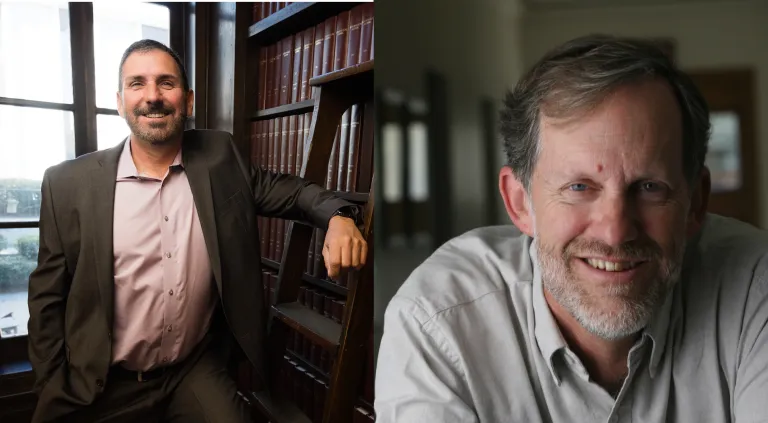Pasadena, CA—Carnegie Science President John Mulchaey and Las Campanas Observatory Director Emeritus Mark Phillips were selected for the 2025 class of Fellows of the American Astronomical Society (AAS) in recognition of “personal achievement and extraordinary service” to the field.

Established in 2020, the accolade honors members of the organization for original research, innovative technique and instrumentation development, significant public outreach and educational efforts, and other noteworthy contributions to the society. Mulchaey and Phillips are part of the sixth cohort of AAS Fellows. Fewer than a half of a percent of society members are inducted each year.
“The collective successes achieved by the 2025 AAS Fellows class reflect the ongoing mission of the AAS to enhance and share humanity's scientific understanding of the universe, as represented by this diverse community,” said AAS President Dara Norman, also of the National Science Foundation’s NOIRLab.
Mulchaey was selected for his pioneering work on the x-ray properties of galaxy groups and clusters—most of which, including our own Milky Way, exist collectively. These systems can be important laboratories for studying the processes that shape galaxies throughout their lifetimes, from their formation through their evolution. Early in his career, Mulchaey led the research group that revolutionized our understanding of galaxy groups by revealing the existence of large amounts of dark matter in their compositions.
He was also recognized for "exemplary leadership in public education and outreach" as well as "outstanding mentorship fostering the development of junior scientists, with a particular focus on supporting women and individuals from underrepresented backgrounds.”
Over the course of his 30-year career at Carnegie Science, Mulchaey has established and promoted a variety of outreach and education efforts with a goal of making astronomy accessible to all and changing the face of the field for generations to come.
The former Associate Director and Interim Director of Carnegie Science’s Las Campanas Observatory in Chile, Phillips was selected as a fellow for his critical research on supernova physics and establishing a relationship—informally named after him—that allows Type Ia supernovae to be used as standard candles. His work improved our ability to measure the rate at which the universe is expanding and helped introduce the idea that dark energy is counteracting gravity, accelerating this expansion.
“Thank you to the AAS for this tremendous honor and congratulations to Mark on a well-deserved recognition of his major contributions to astronomy and cosmology,” said Mulchaey, who is also a member of the society’s Committee on Astronomy and Public Policy and the Weber Prize Selection Committee. “Carnegie Science Observatories founder George Ellery Hale played a critical role in establishing the AAS, so this distinction further intertwines the legacy of our two great organizations.”
